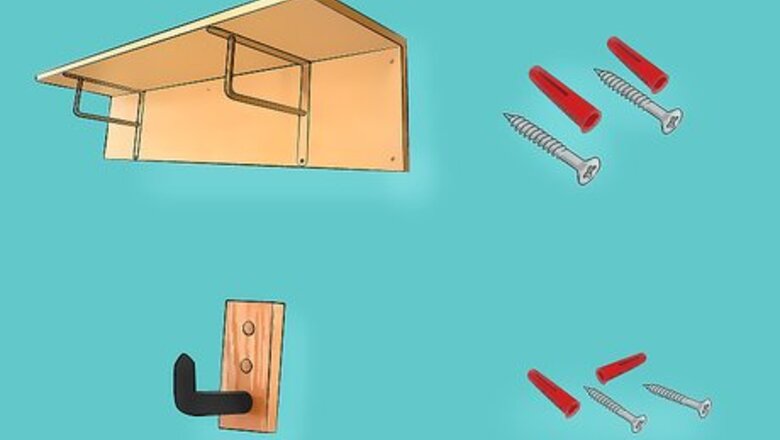
views
Choosing the Correct Plug
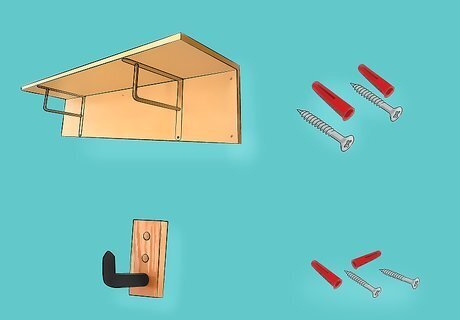
Consider the weight of the object. The weight of the object you wish to hang will determine the screw gauge you'll need, and the screw gauge will determine the correct wall plug. The gauge of a screw is the diameter of the non-threaded portion. Larger numbers indicate a larger diameter. As a general rule, the heavier the object is, the larger screw gauge you'll need. If the object comes packaged with manufacturer's instructions, review those instructions for advice on the proper screw gauge. If no instructions are available, use the following notes as a general guide: Standard kitchen cupboards may need size 10 (5.0 mm) screws. Internal doors may need size 8 (4.0 mm) screws. A shelf measuring 1 yard (0.91 m) (1 m) in length may require size 8 (4.0 mm) screws. A 12-inch (30.5-cm) by 8-inch (20-cm) picture frame may need size 6 (3.5 mm) screws. When in doubt, use screw that might be too large instead of using one that might be too small.

Match the wall plug to the screw. The correct wall plug size will primarily depend upon the screw gauge being used. More precisely, the wall plug size will change based on the drill bit used to create the hole. As a general rule: Yellow plugs fit into 5.0 mm holes and work best with screw sizes 3 and 4, but can be used for screw sizes 3 through 8. Red plugs fit into 6.0 mm holes and work best with screw sizes 6 and 8, but can be used for screw sizes 6 through 10. Brown plugs fit into 7.0 mm holes and work best with screw sizes 8 through 12, but can be used for screw sizes 8 through 14. Blue plugs fit into 10.0 mm holes and work best with screw size 14, but can be used for screw sizes 14 through 18. Note that not every brand follows the same color guidelines. Check the package or the wall plug itself for information concerning hole size before you begin working with any set of plugs.
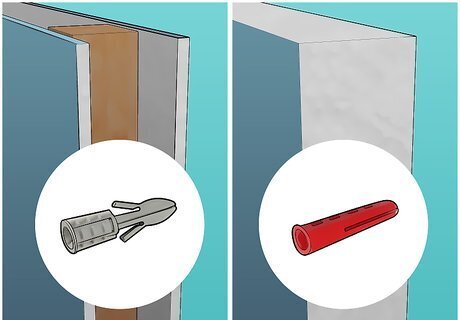
Examine the wall. Determine whether the wall is solid or hollow before purchasing wall plugs for it. Solid walls will need the standard bullet-shaped wall plug. Hollow walls will need wall plugs with wings, also known as plasterboard plugs.
Installing a Rawl Plug
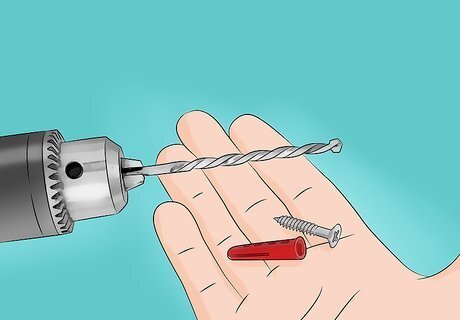
Insert the correct bit into the drill. Insert the required drill bit into a power drill, firmly locking it into place. Choose a drill bit that corresponds to the necessary pilot hole size for the wall plug you intend to use. In other words, use a 5.0 mm drill bit for a yellow plug, a 6.0 mm drill bit for a red plug, a 7.0 mm drill bit for a brown plug, or a 10.0 mm drill bit for a blue plug. If in doubt, compare the drill bit with the large drill bit hole on the left side of the wall plug strip. The bit should tightly fit into this guide hole.
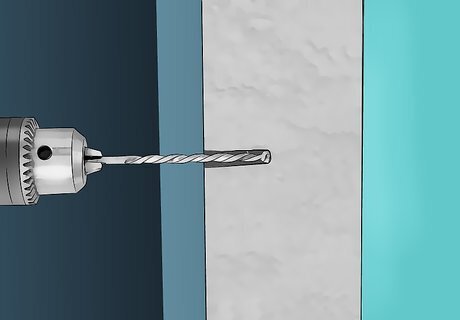
Drill a pilot hole straight into the wall. Hold the drill bit to the wall and slowly drill your pilot hole. The drill itself should be positioned at a right angle against the wall. Work slowly and only drill a hole that is just long enough to accommodate the screw you intend to use.
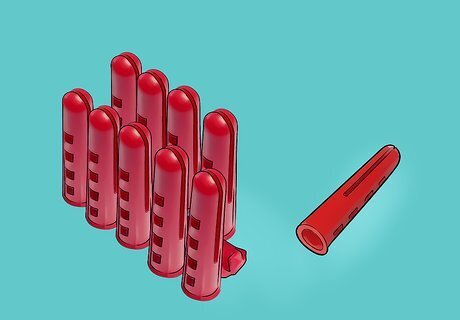
Remove a plug. Remove one wall plug from the strip by twist and snapping it off. The thin plastic connecting the plug to the strip must break, but the body of the plug must remain intact and undented.
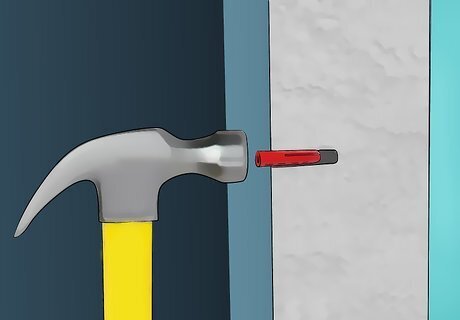
Insert the plug into the pilot hole. Using your fingers, push the wall plug into the pilot hole. After pushing it into the wall as far as possible with your fingers, use a hammer to carefully push it in further. Stop once the head of the wall plug is flush against the wall. Note that it must fit snugly into the hole. If it feels loose, the plug will be unable to grasp the screw properly and will only spin around as you attempt to install the screw. If the plug is loose, increase the plug size and adjust the screw size as needed to match.
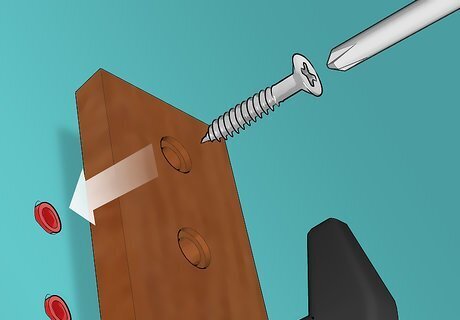
Gently twist in the screw. Insert the tip of the screw into the installed wall plug, then gently twist the head of the screw in between your fingers until the tip enters the first few millimeters of the plug. Note that the screw must be equal to or larger than the minimum screw size hole indicated on the wall plug strip. It must also be equal to or smaller than the maximum screw size hole on the same strip. If you are unable to get the screw to grip properly when using your fingers, you could screw the first few millimeters in using a manual screwdriver. You could also gently tap the first few millimeters in using a hammer. Inserting the tip into the plug in this manner can reduce the amount of pressure put on the wall when you tighten the screw, thereby reducing the risk of cracking or otherwise damaging the wall material.

Switch to the proper tool. You can finish tightening the screw using a Phillips screwdriver or an electric drill, but you'll need to make sure that you have the right size tool before you begin. Check the width of the screwdriver or drill bit against the slot of the screw. The two must be a close match.
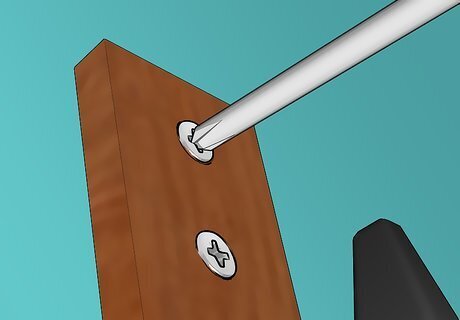
Tighten the screw firmly. Slowly tighten the screw into the wall plug as needed using the drill or screwdriver. If you decide to use a power drill, run the drill on its slowest speed to reduce the risk of overtightening the screw. Do not overtighten the screw. If it feels too tight and working it into the wall takes too much effort, you should reverse the tool and pull the screw out. Switch to a smaller screw or start over with a larger pilot hole before trying again. Once the screw is securely tightened into the wall plug, the installation process is complete.


















Comments
0 comment